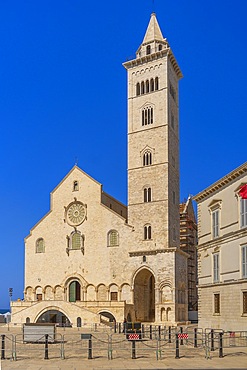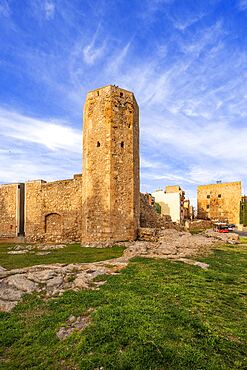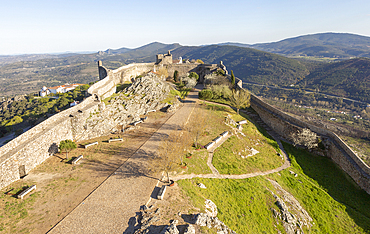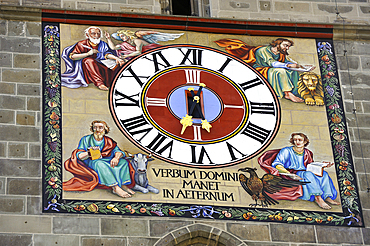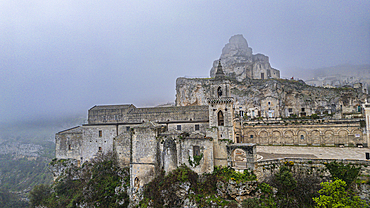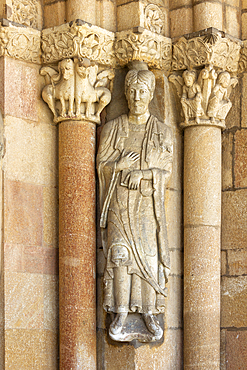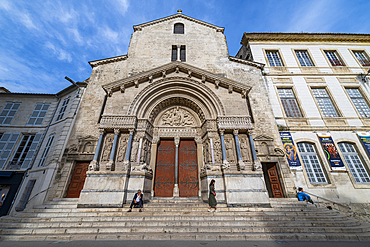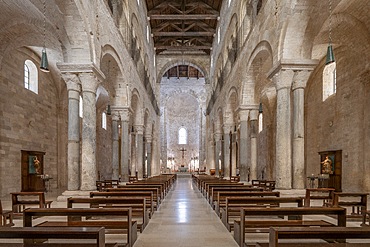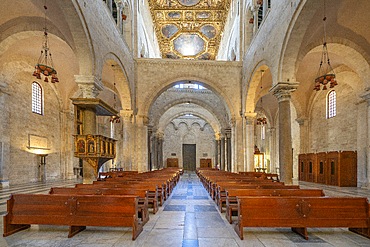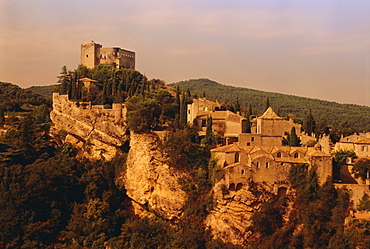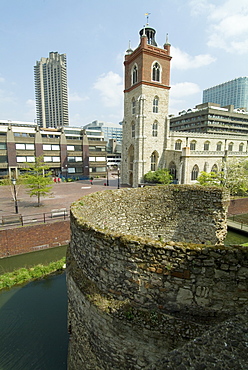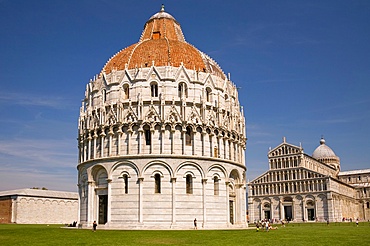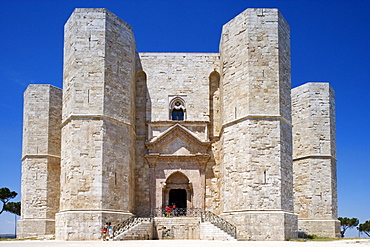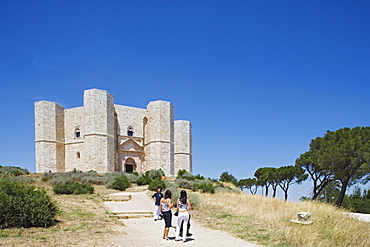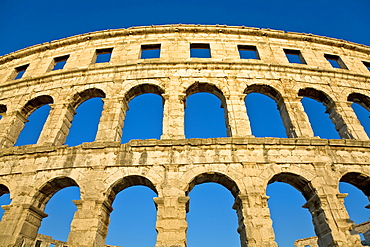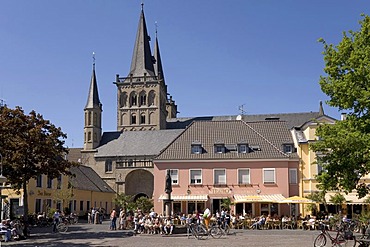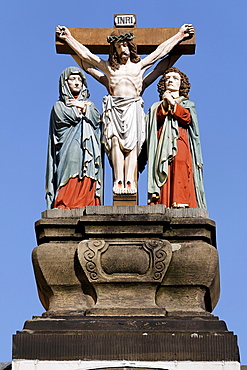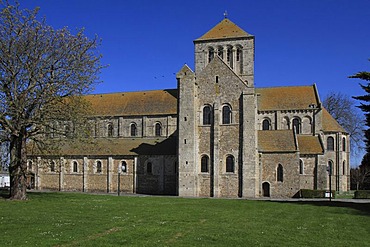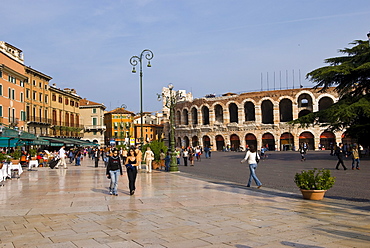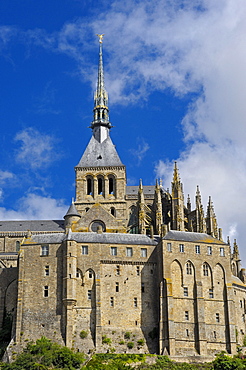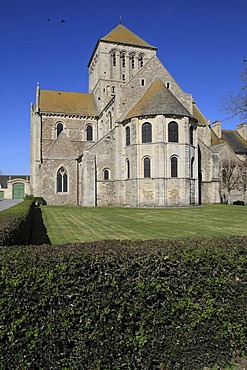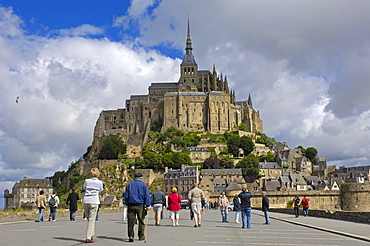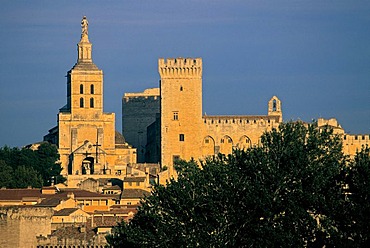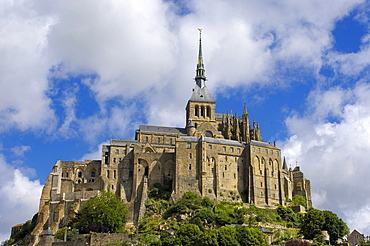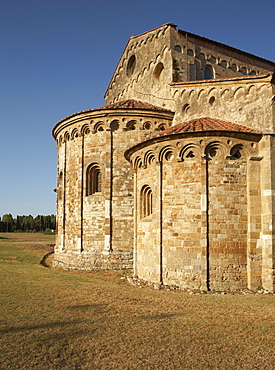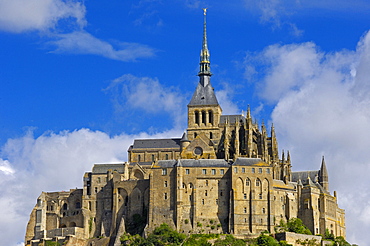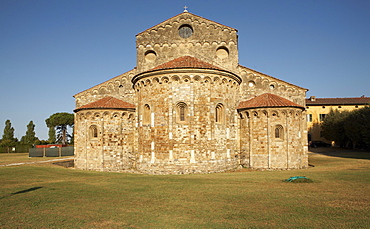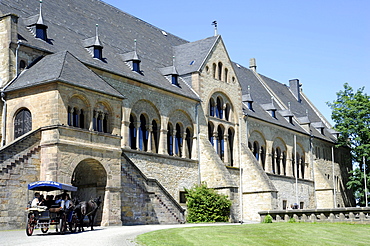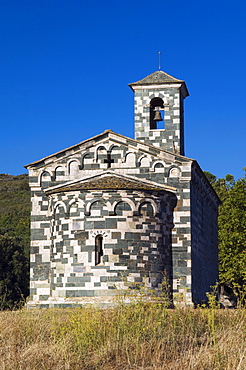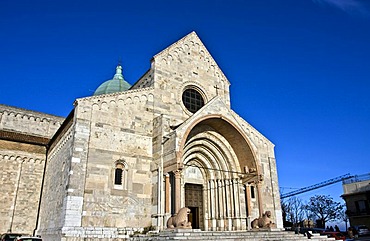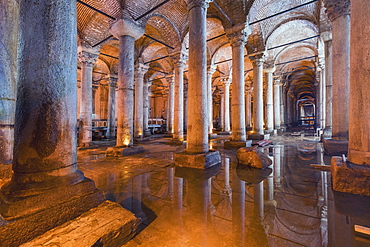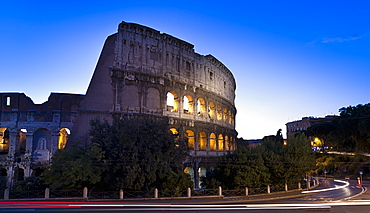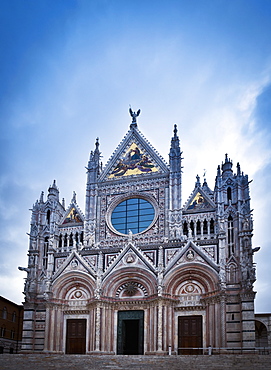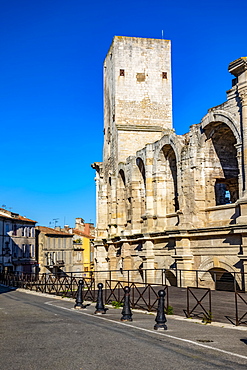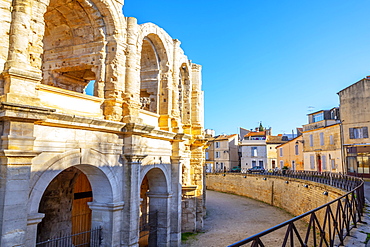Results
31 results found
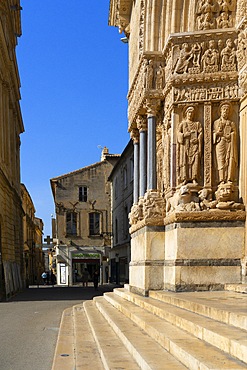
Church of St-Trophime, UNESCO, Arles, Bouches du Rhone, Camargue, Provence-Alpes-Cote d'Azur, France
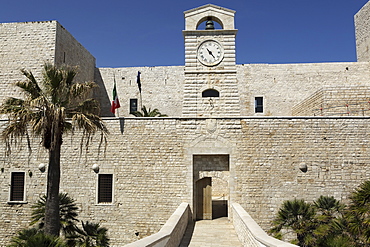
The gate of Castello Svevi, the 13th century castle built for King Frederick II, the Holy Roman Emperor, in Trani, Apulia, Italy, Europe

Interior of Pisa Cathedral, a medieval Roman Catholic cathedral dedicated to the Assumption of the Virgin Mary, Pisa, Tuscany, Italy, Europe
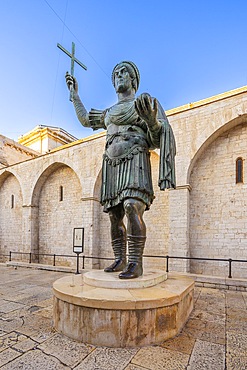
Colossus of Barletta, Basilica of the Holy Sepulchre, Barletta, Barletta-Andria-Trani, Apulia, Italy
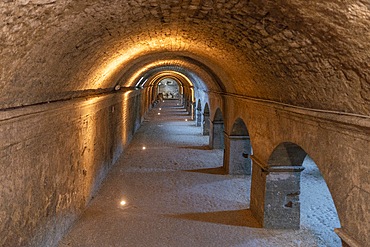
Forum, Cryptoporticoes, UNESCO, Arles, Bouches du Rhone, Camargue, Provence-Alpes-Cote d'Azur, France
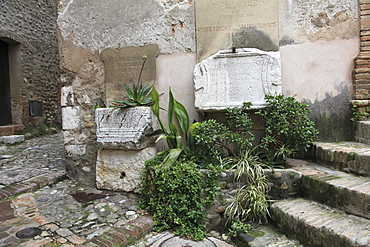
Roman antiquities, Haut de Cagnes, Medieval Village, Cagnes sur Mer, Alpes Maritimes, Cote d'Azur, Provence, France, Europe
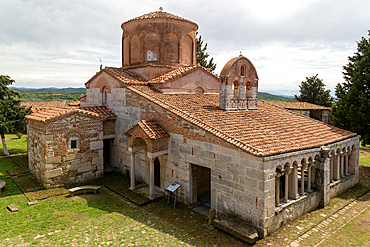
Monastery and Greek Orthodox church of the Virgin Mary, Apollonia Archaeological Park, Pojan, Albania, Europe

Roman cloister of Sant Pere de Galligants Monastery housing the Archaeological Museum of Catalonia, Girona, Catalonia, Spain, Europe
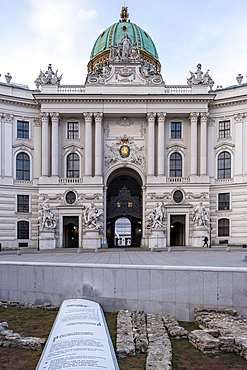
Vienna, Austria - View of Michaelerplatz, the historic square in front of Hofburg Palace's Michaelertor gate, featuring the excavated ruins of ancient Roman and medieval Vienna alongside Baroque architecture.
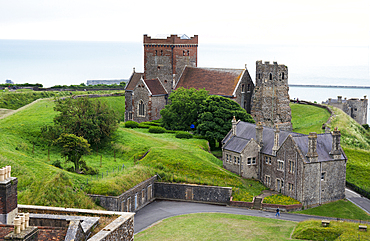
View of St. Mary's Church and Roman Pharos, Dover Castle, Dover, Kent, England, United Kingdom, Europe
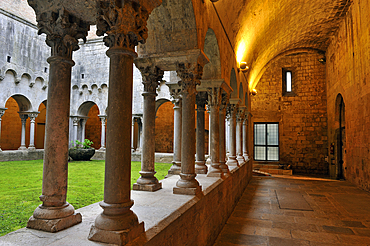
Roman cloister of Sant Pere de Galligants Monastery housing the Archaeological Museum of Catalonia, Girona, Catalonia, Spain, Europe
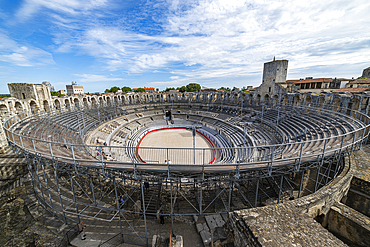
The Roman Amphitheatre, Arles, UNESCO World Heritage Site, Bouches du Rhone, Provence-Alpes-Cote d'Azur, France, Europe

Cite de Carcassonne citadel, UNESCO World Heritage Site, Carcassonne, Aude, Occitania, France, Europe
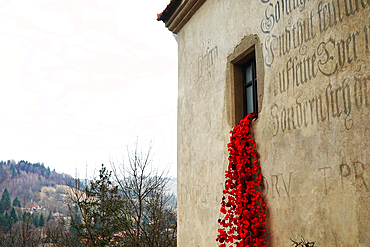
Bran Castle, Bran, near Brasov, Transylvania. The castle was built by Saxons in 1377 who were given the privilege by Louis I of Hungary. It is a national monument and landmark in Transylvania and famous for its association with the Dracula story.
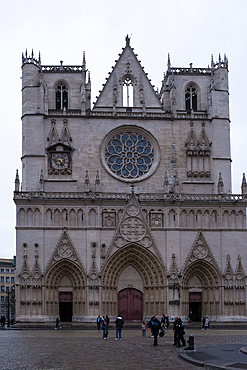
View of Lyon Cathedral, a Roman Catholic church dedicated to St. John the Baptist, seat of the Archbishop of Lyon, Place Saint-Jean in central Lyon, Auvergne Rhone Alpes, France, Europe
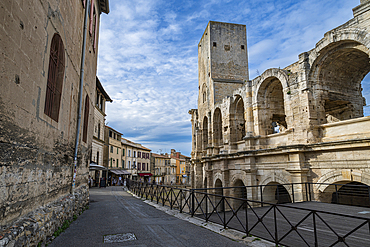
The Roman Amphitheatre, Arles, UNESCO World Heritage Site, Bouches du Rhone, Provence-Alpes-Cote d'Azur, France, Europe
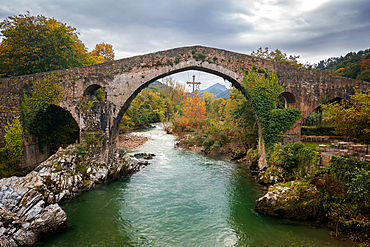
Cangas de Onis historic medieval Roman bridge over the Sella River in Picos de Europa National Park, Asturias, Spain, Europe
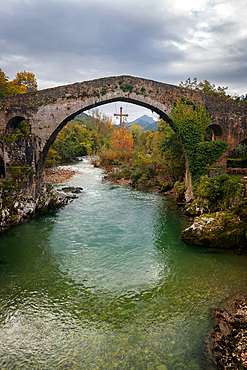
Cangas de Onis historic medieval Roman bridge over the Sella River in Picos de Europa National Park, Asturias, Spain, Europe
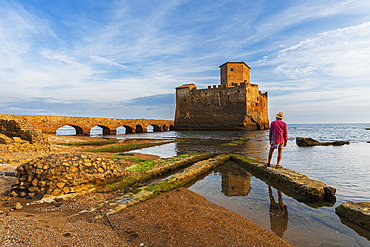
Man with hat stands on top of Roman ruin facing the medieval castle of Torre Astura rising from the sea, Nettuno municipality, province of Rome, Tyrrhenian sea, Latium (Lazio), Italy, Europe
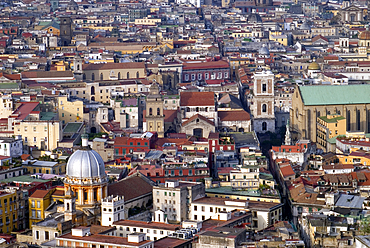
View over the historic center from the Belvedere of San Martino, Naples, Campania region, Italy, Europe

PORTUGAL, ALGARVE, SILVES. Ponta Romana, Roman Bridge, The foundations are Roman, the rest of the structure is Medieval
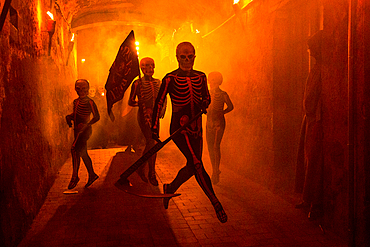
Verges, a small town in the Northeast of Catalonia (Spain), during Easter celebrates the Procession of Verges with skeletons dancing on the sound of a drum, Roman soldiers, known as the 'Manages', and a representation of the life and crucifixion of Jesus Christ. The Procession features the Dance of Death, a tradition from the Middle Age associated with epidemics and plagues and the only one remaining in Spain Ten skeletons dance to the beat of a drum to remember that no one is exempt of death. The backdrop of the medieval walls and towers of Verges is key to this macabre staging.
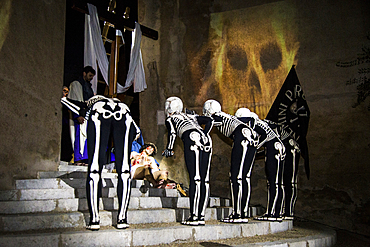
Verges, a small town in the Northeast of Catalonia (Spain), during Easter celebrates the Procession of Verges with skeletons dancing on the sound of a drum, Roman soldiers, known as the 'Manages', and a representation of the life and crucifixion of Jesus Christ. The Procession features the Dance of Death, a tradition from the Middle Age associated with epidemics and plagues and the only one remaining in Spain Ten skeletons dance to the beat of a drum to remember that no one is exempt of death. The backdrop of the medieval walls and towers of Verges is key to this macabre staging.
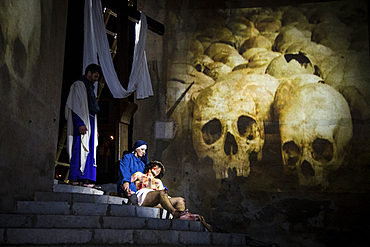
Verges, a small town in the Northeast of Catalonia (Spain), during Easter celebrates the Procession of Verges with skeletons dancing on the sound of a drum, Roman soldiers, known as the 'Manages', and a representation of the life and crucifixion of Jesus Christ. The Procession features the Dance of Death, a tradition from the Middle Age associated with epidemics and plagues and the only one remaining in Spain Ten skeletons dance to the beat of a drum to remember that no one is exempt of death. The backdrop of the medieval walls and towers of Verges is key to this macabre staging.
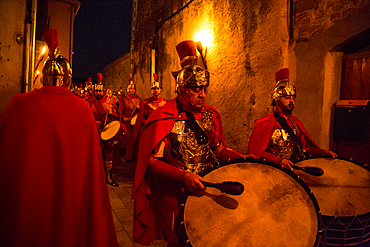
Verges, a small town in the Northeast of Catalonia (Spain), during Easter celebrates the Procession of Verges with skeletons dancing on the sound of a drum, Roman soldiers, known as the 'Manages', and a representation of the life and crucifixion of Jesus Christ. The Procession features the Dance of Death, a tradition from the Middle Age associated with epidemics and plagues and the only one remaining in Spain Ten skeletons dance to the beat of a drum to remember that no one is exempt of death. The backdrop of the medieval walls and towers of Verges is key to this macabre staging.
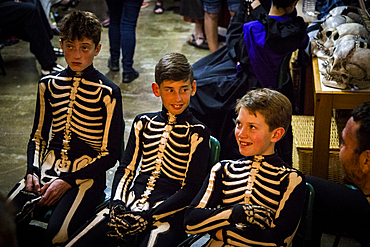
Verges, a small town in the Northeast of Catalonia (Spain), during Easter celebrates the Procession of Verges with skeletons dancing on the sound of a drum, Roman soldiers, known as the 'Manages', and a representation of the life and crucifixion of Jesus Christ. The Procession features the Dance of Death, a tradition from the Middle Age associated with epidemics and plagues and the only one remaining in Spain Ten skeletons dance to the beat of a drum to remember that no one is exempt of death. The backdrop of the medieval walls and towers of Verges is key to this macabre staging.
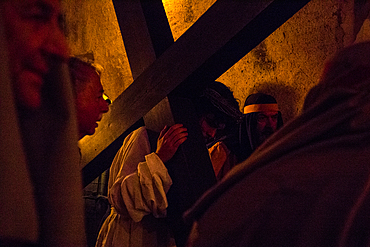
Verges, a small town in the Northeast of Catalonia (Spain), during Easter celebrates the Procession of Verges with skeletons dancing on the sound of a drum, Roman soldiers, known as the 'Manages', and a representation of the life and crucifixion of Jesus Christ. The Procession features the Dance of Death, a tradition from the Middle Age associated with epidemics and plagues and the only one remaining in Spain Ten skeletons dance to the beat of a drum to remember that no one is exempt of death. The backdrop of the medieval walls and towers of Verges is key to this macabre staging.
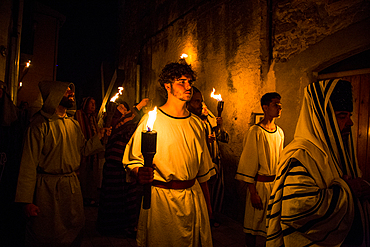
Verges, a small town in the Northeast of Catalonia (Spain), during Easter celebrates the Procession of Verges with skeletons dancing on the sound of a drum, Roman soldiers, known as the 'Manages', and a representation of the life and crucifixion of Jesus Christ. The Procession features the Dance of Death, a tradition from the Middle Age associated with epidemics and plagues and the only one remaining in Spain Ten skeletons dance to the beat of a drum to remember that no one is exempt of death. The backdrop of the medieval walls and towers of Verges is key to this macabre staging.
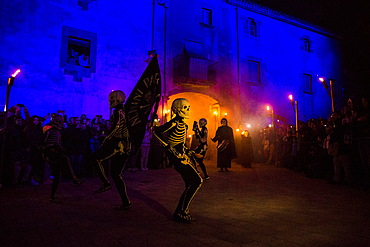
Verges, a small town in the Northeast of Catalonia (Spain), during Easter celebrates the Procession of Verges with skeletons dancing on the sound of a drum, Roman soldiers, known as the 'Manages', and a representation of the life and crucifixion of Jesus Christ. The Procession features the Dance of Death, a tradition from the Middle Age associated with epidemics and plagues and the only one remaining in Spain Ten skeletons dance to the beat of a drum to remember that no one is exempt of death. The backdrop of the medieval walls and towers of Verges is key to this macabre staging.
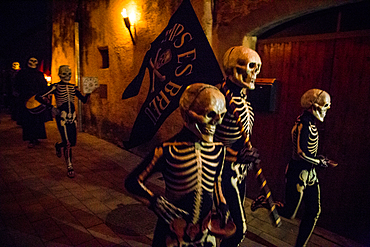
Verges, a small town in the Northeast of Catalonia (Spain), during Easter celebrates the Procession of Verges with skeletons dancing on the sound of a drum, Roman soldiers, known as the 'Manages', and a representation of the life and crucifixion of Jesus Christ. The Procession features the Dance of Death, a tradition from the Middle Age associated with epidemics and plagues and the only one remaining in Spain Ten skeletons dance to the beat of a drum to remember that no one is exempt of death. The backdrop of the medieval walls and towers of Verges is key to this macabre staging.
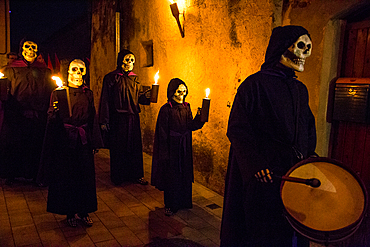
Verges, a small town in the Northeast of Catalonia (Spain), during Easter celebrates the Procession of Verges with skeletons dancing on the sound of a drum, Roman soldiers, known as the 'Manages', and a representation of the life and crucifixion of Jesus Christ. The Procession features the Dance of Death, a tradition from the Middle Age associated with epidemics and plagues and the only one remaining in Spain Ten skeletons dance to the beat of a drum to remember that no one is exempt of death. The backdrop of the medieval walls and towers of Verges is key to this macabre staging.
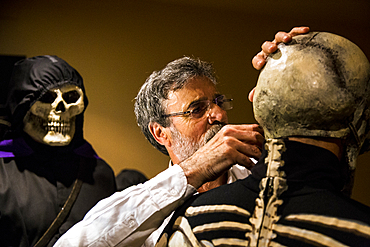
Verges, a small town in the Northeast of Catalonia (Spain), during Easter celebrates the Procession of Verges with skeletons dancing on the sound of a drum, Roman soldiers, known as the 'Manages', and a representation of the life and crucifixion of Jesus Christ. The Procession features the Dance of Death, a tradition from the Middle Age associated with epidemics and plagues and the only one remaining in Spain Ten skeletons dance to the beat of a drum to remember that no one is exempt of death. The backdrop of the medieval walls and towers of Verges is key to this macabre staging.
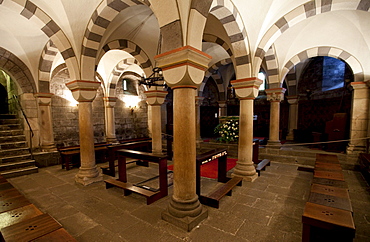
The Abbey of Maria Laach, Latin: Abbatia Mariae Lacensis or Abbatia Mariae ad Lacum, southwest side of the Laacher See lake, Eifel, municipality Glees, district of Ahrweiler, Rhineland-Palatinate, Germany, Europe
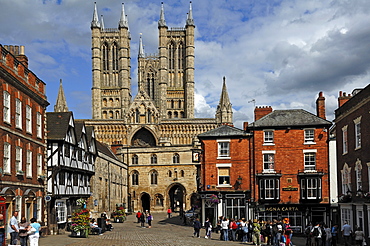
Lincoln Cathedral or St. Mary's Cathedral, 12th and 13th Century, Gothic-Romanesque style, with surrounding houses, Minster Yard, Lincoln, Lincolnshire, England, United Kingdom, Europe
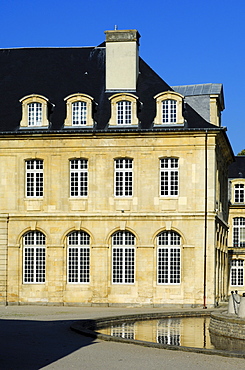
North wing of the cloister building, L'Abbaye aux Dames, Abbey of Women, Caen, Basse-Normandie, France, Europe

Church and medieval cloister of the Abbaye de Fontevraud abbey, Aquitaine Romanesque, built from 1105 to 1160, Fontevraud-lÃAbbaye, Loire Valley near Saumur, Maine-et-Loire, France, Europe
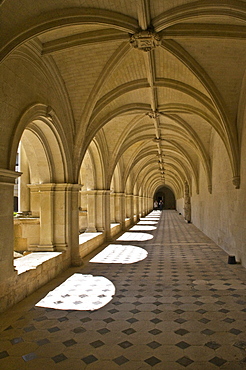
Medieval cloister, Abbaye de Fontevraud abbey, Aquitaine Romanesque, built from 1105 to 1160, Fontevraud-lÃAbbaye, Loire Valley near Saumur, Maine-et-Loire, France, Europe

View in side compartment from the medieval cloister, Abbaye de Fontevraud abbey, Aquitaine Romanesque, built from 1105 to 1160, Fontevraud-lÃAbbaye, Loire Valley near Saumur, Maine-et-Loire, France, Europe
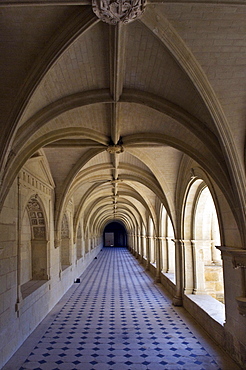
Medieval cloister, Abbaye de Fontevraud abbey, Aquitaine Romanesque, built from 1105 to 1160, Fontevraud-lÃAbbaye, Loire Valley near Saumur, Maine-et-Loire, France, Europe

Roman arena amphitheatre with preserved medieval tower, Arles, Bouches-du-Rhone department, Provence Alpes Cote d'Azur region, Mediterranean Sea, France, Europe

Basilica of St. George, a late Carolingian and Ottonian building in Oberzell, Isle of Reichenau, Lake Constance, Konstanz district, Baden-Wuerttemberg, Germany, Europe
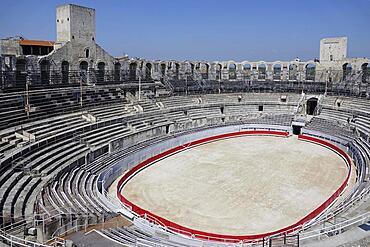
Roman arena amphitheatre with preserved medieval towers, Arles, Bouches-du-Rhone department, Provence Alpes Cote d'Azur region, France, Mediterranean Sea, Europe

Church and medieval cloister of the Abbaye de Fontevraud abbey, Aquitaine Romanesque, built from 1105 to 1160, Fontevraud-lÃAbbaye, Loire Valley near Saumur, Maine-et-Loire, France, Europe
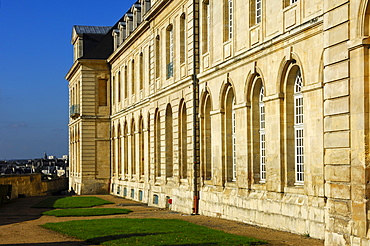
Exterior facade of the South wing of L'Abbaye aux Dames, Abbey of Women, Caen, Basse-Normandie, France, Europe

Stiftskirche St. Peter collegiate church and Ritterstift monastery, Bad Wimpfen, Neckartal, Baden-Wuerttemberg, Germany, Europe
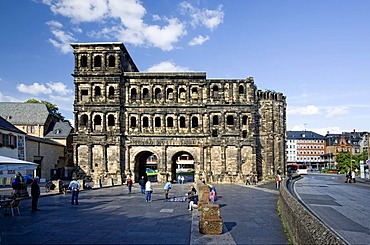
Porta Nigra city gate in front of the medieval market cross, Hauptmarkt central square, Trier, Rhineland-Palatinate, Germany, Europe
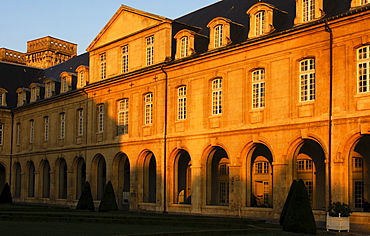
North wing of the cloister building with covered walk in the morning light, L'Abbaye aux Dames, Abbey of Women, Caen, Basse-Normandie, France, Europe
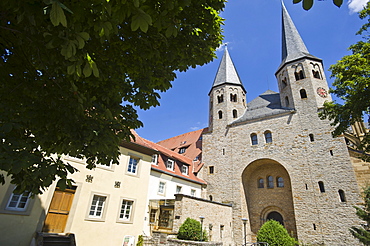
Stiftskirche St. Peter collegiate church and Ritterstift monastery, Bad Wimpfen, Neckartal, Baden-Wuerttemberg, Germany, Europe

Romanesque collegiate church, Santillana del Mar, medieval town, historic buildings, Cantabria, Spain, Europe

